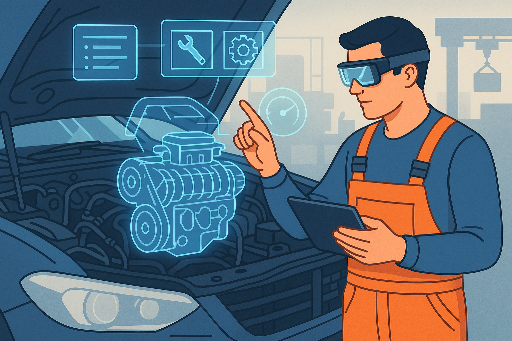
Bringing the Future into the Field with Augmented Reality

Augmented reality (AR) is opening exciting new possibilities for small and family-owned farms by blending digital information with real-world agricultural practices. With AR-enabled devices, farmers can visualize crop health, soil conditions, and irrigation needs through interactive overlays on their smartphones, tablets, or AR glasses. This technology transforms traditional farming methods into precision-guided systems, offering real-time insights without the need for expensive or complicated equipment. For small farms striving to increase efficiency and reduce costs, AR provides a powerful, accessible tool to make informed decisions faster and with greater confidence.
One of the most valuable applications of AR in small-scale farming is hands-free, on-site guidance for equipment maintenance, planting, and harvesting. Augmented reality can project step-by-step instructions onto machinery or fields, allowing farmers to perform complex tasks without referring to manuals or waiting for external technicians. In livestock management, AR systems can provide immediate health monitoring cues by scanning animals and highlighting potential concerns. This level of operational support dramatically reduces downtime, improves productivity, and empowers small farm owners to take control of their operations with minimal outside intervention.
Beyond daily operations, AR enhances education and collaboration within farming communities. New farmers can use AR training modules to learn best practices without leaving their fields, and remote experts can "walk" alongside farmers virtually to diagnose problems and recommend solutions. Direct-to-consumer marketing also benefits, as AR experiences can connect customers to the farm’s story, offering virtual tours or showcasing how produce is grown and harvested. For small and family-owned farms, augmented reality represents not just a technological upgrade, but a bridge to a smarter, more resilient future.
Augmented Precision:
Bringing Clarity and Confidence to Every Repair

Augmented Reality (AR) is reshaping the way technicians perform maintenance on vehicles, agricultural equipment, and factory systems. By overlaying digital instructions, 3D models, and live diagnostic data onto real-world machinery, AR helps workers visualize internal systems and understand complex repairs without dismantling components prematurely. This not only improves accuracy but also accelerates the troubleshooting process in automotive garages, equipment yards, and industrial production lines.
With AR-powered headsets or tablets, maintenance personnel can receive hands-free, guided assistance tailored to the exact make and model of the asset being serviced. In a vehicle repair scenario, AR can highlight bolt patterns, torque specs, and proper part sequences right on the hood. For larger equipment like combines, forklifts, or factory conveyor systems, AR enables real-time overlays that reduce training time and minimize the risk of human error during disassembly or calibration.
Beyond visualization, AR systems often integrate with IoT (Internet of Things) sensors and maintenance management software, enabling users to log repairs, view machine histories, and confirm part compatibility instantly. Factories benefit from reduced downtime and faster onboarding of new technicians, while field operators gain mobile access to expert-level guidance without needing to leave the worksite. As AR hardware becomes more rugged and affordable, its role in enhancing maintenance operations will only expand.